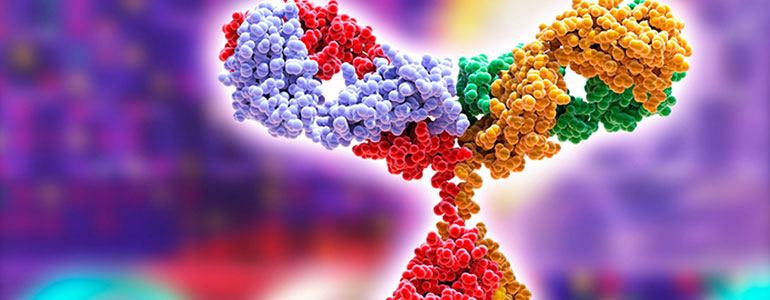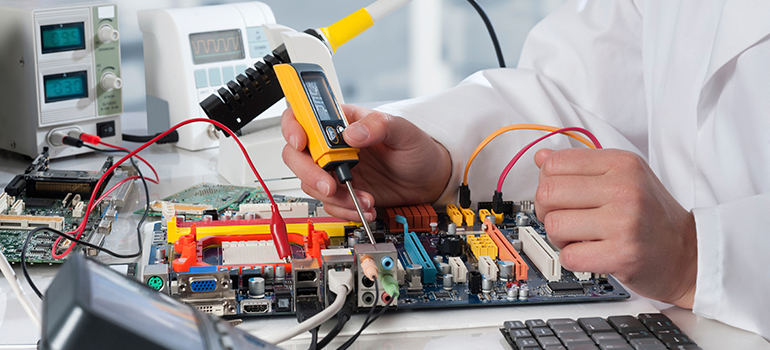Bioanalysis and Immunogenicity Series - Volume 4

Biosimilar Pharmacokinetic and Immunogenicity Method Development and Validation
30 October 2018
A biosimilar is a biological medicine highly similar to an existing, approved biologic. Biosimilars must prove their similarity to the original biologic agent, meaning head-to-head characterization studies are required to see if similarity can be achieved and to illustrate proof of the similarity to governing agencies. Additionally, common post-translational modifications (PTMs) in the biosimilar can impact immunoreactivity, potency, pharmacokinetic profile, clearance and immunogenicity. The consequences of unwanted immunogenicity can vary from clinically irrelevant to serious, even life threatening. As such, it is critical to evaluate immunogenicity. The potential for these reactions, along with requirements from governing agencies make bioanalytical pharmacokinetic (PK) and immunogenicity (ADA) assessments a must for biosimilar drug development.
PK Assay Approach
The PK approach can be used to demonstrate comparability. If needed, one can go past usual confirmation of comparability and incorporate additional comparability statistical testing, via a parallel line analysis. Late-stage method development can also confirm use of a single assay in a complex matrix environment.
When using PK testing for comparability, it is important to consider various lots going into clinical testing. If there is drastic difference between stock concentrations, take this into account and adjust accordingly. Make sure you are reviewing head-to-head CMC analytical comparison. Conduct your buffer experiments on the biosimilar and reference product, independent of one another. Then conduct the buffer experiments interpolating off one another. Once comparability has been shown in a chemically ideal environment, then we know that both the biosimilar and the reference product are equally immunoreactive with your reagents in the chosen assay format. If results and trends are not straight forward and clear, may want to perform parallel line analysis using the buffer data.
ADA Assay Approach
Immunogenicity can be examined with either a one-assay approach or a two-assay approach. A one-assay approach may increase the likelihood of false negatives, unless extensive comparability testing is done in method-development stages. Inadequate comparability testing in method development stage could expose the assay to false negative results. The two-assay approach may decrease the likelihood of false negatives due to possibility of missing reference product-specific epitopes. However, the complexity of reconciling data from two individual assays in the context of accepted variability within various LBA formats/platforms can present a challenge.
Immunogenicity testing must demonstrate comparability in early method development stage using a conjugated biosimilar and conjugated reference with appropriate positive controls for each. Itis critical to consider lot variation for both the biosimilar and reference product. Additionally, comparable reagent immunoreactivity should be confirmed in a chemically ideal environment, via an assay buffer. During the comparability stage, examine the binding profiles and inhibition profiles. Finally move into late stage method development to confirm use of single assay in a complex matrix environment.
The potential for reactions in biosimilar medications, along with requirements from governing agencies make PK and immunogenicity assessments a must. The best way to achieve this is to use the CMC Analytical head-to-head comparison data as the point of reference; lead with PK assessments and follow with ADA; and use buffer experiments to assess comparability. You should end up with a single assay for both PK and ADA, but due to the inherent variability of LBA systems and the expected 'similarity' between biosimilar and reference product, use two assays for ADA comparability testing before switching to a single assay
For more insights into the PK and ADA approach, including a deeper dive into methods, download our complimentary webinar recording.
George has a diverse technical background with more than 10 years focused on building immunoassays and associated GLP practices to support the development of large molecule therapeutics throughout the drug development process. Having worked across several industry CROs and leading biopharma organizations he joined Intertek in 2016 where he now leads the immunoassay laboratory and team. He regularly interacts with the Regulatory Authorities and works with clients to address their immunochemistry needs, identifying tactical and strategic approaches to help clients achieve their drug development goals.
Tags: 2018 | George Hristopoulos | Medical and Pharmaceutical

George Hristopoulos,
Scientific Director, Immunoassay, Life Sciences, Chemicals and Pharmaceuticals


